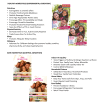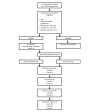HomeStyles, A Web-Based Childhood Obesity Prevention Program for Families With Preschool Children: Protocol for a Randomized Controlled Trial
- PMID: 28442452
- PMCID: PMC5424124
- DOI: 10.2196/resprot.7544
HomeStyles, A Web-Based Childhood Obesity Prevention Program for Families With Preschool Children: Protocol for a Randomized Controlled Trial
Abstract
Background: The home environment is where young children spend most of their time, and is critically important to supporting behaviors that promote health and prevent obesity. However, the home environment and lifestyle patterns remain understudied, and few interventions have investigated parent-led makeovers designed to create home environments that are supportive of optimal child health and healthy child weights.
Objective: The aim of the HomeStyles randomized controlled trial (RCT) is to determine whether the Web-based HomeStyles intervention enables and motivates parents to shape the weight-related aspects of their home environments and lifestyle behavioral practices (diet, exercise, and sleep) to be more supportive of their preschool children's optimal health and weight.
Methods: A rigorous RCT utilizing an experimental group and an attention control group, receiving a bona fide contemporaneous treatment equal in nonspecific treatment effects and differing only in subject matter content, will test the effect of HomeStyles on a diverse sample of families with preschool children. This intervention is based on social cognitive theory and uses a social ecological framework, and will assess: intrapersonal characteristics (dietary intake, physical activity level, and sleep) of parents and children; family interpersonal or social characteristics related to diet, physical activity, media use, and parental values and self-efficacy for obesity-preventive practices; and home environment food availability, physical activity space and supports in and near the home, and media availability and controls in the home.
Results: Enrollment for this study has been completed and statistical data analyses are currently underway.
Conclusions: This paper describes the HomeStyles intervention with regards to: rationale, the intervention's logic model, sample eligibility criteria and recruitment, experimental group and attention control intervention content, study design, instruments, data management, and planned analyses.
Keywords: childhood obesity; children; nutrition; parents; physical activity; prevention; sleep.
©Carol Byrd-Bredbenner, Jennifer Martin-Biggers, Mallory Koenings, Virginia Quick, Nobuko Hongu, John Worobey. Originally published in JMIR Research Protocols (http://www.researchprotocols.org), 25.04.2017.
Conflict of interest statement
Conflicts of Interest: None declared.
Figures
References
-
- Crockett S, Sims L. Environmental influences in children's eating. J Nutr Educ. 1995;27:235–249.
-
- Patrick H, Nicklas TA. A review of family and social determinants of children's eating patterns and diet quality. J Am Coll Nutr. 2005 Apr;24(2):83–92.24/2/83 - PubMed
-
- Story M, Neumark-Sztainer D, French S. Individual and environmental influences on adolescent eating behaviors. J Am Diet Assoc. 2002 Mar;102(3 Suppl):S40–51. - PubMed
-
- Kelder S, Hoelscher D, Perry C. How individuals, environments, and health behavior interact; Social Cognitive Theory. In: Glanz K, Rimer B, Viswanath K, editors. Health Behavior and Health Education: Theory, Research, and Practice. 4th Edition. San Francisco: Jossey-Bass; 2015.
LinkOut - more resources
Full Text Sources
Other Literature Sources




